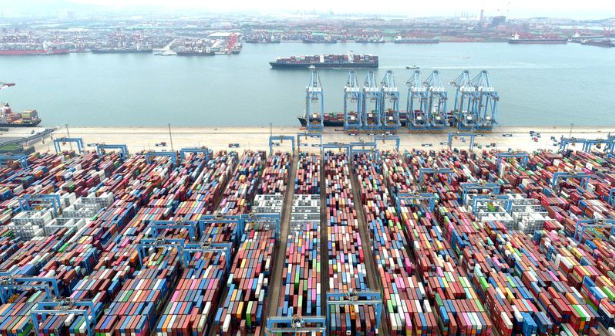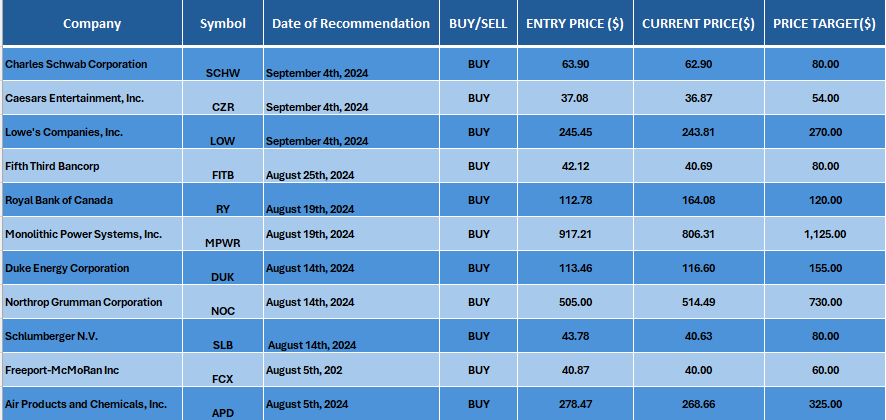
Date Issued – 10th September 2024
China’s Exports Beat Forecasts, But Domestic Demand Drags on Imports
Surge in Exports Reflects Pre-Tariff Rush
China’s exports surged in August, marking the fastest growth in nearly 18 months, as manufacturers accelerated orders ahead of anticipated tariffs from a growing list of trade partners. However, this strong export performance was offset by weaker-than-expected imports, underscoring a sluggish domestic demand that continues to challenge Beijing’s efforts to stimulate broader economic growth. According to customs data released Tuesday, China’s outbound shipments grew by 8.7% year-on-year, the quickest pace since March 2023, surpassing the 6.5% forecast in a Reuters poll. This followed a 7% rise in July. In contrast, imports saw a mere 0.5% increase, falling short of the expected 2% growth and down significantly from the 7.2% surge the previous month.
Balancing Export Reliance and Economic Stimulus
China’s export-driven growth raises concerns for policymakers who are wary of over-reliance on trade amid global uncertainties. The country’s economy has faced persistent challenges, with a protracted real estate slump and weak consumer spending weighing heavily on growth. Economists have warned that without stronger domestic demand, China could miss its growth targets, putting pressure on authorities to introduce further stimulus measures. “The robust export performance is positive for third-quarter economic growth,” noted Zhou Maohua, a macroeconomic researcher at China Everbright Bank. “However, the complex global economic and geopolitical environment presents significant headwinds for China’s exports,” he added.
Trade Barriers Complicate Outlook
As China’s exports show resilience, mounting trade barriers are threatening its competitive edge. The country’s trade surplus with the U.S. widened to $33.81 billion in August, up from $30.84 billion in July, drawing further scrutiny from Washington, which has long criticized the imbalance.
The European Union is also adopting a more protectionist stance, with little progress in Beijing’s negotiations to reduce tariffs on Chinese electric vehicles (EVs). Meanwhile, Canada has imposed a 100% tariff on Chinese EVs, alongside a 25% tariff on Chinese steel and aluminum. In Southeast Asia and South Asia, China is encountering resistance as well. India is preparing to raise tariffs on Chinese steel, Indonesia is considering hefty duties on textiles, and Malaysia has launched anti-dumping investigations into Chinese plastic imports.
Outlook for Exports Amid Global Challenges
Despite these rising barriers, some analysts remain optimistic about China’s export resilience, citing the weaker yuan and the ability of exporters to reroute goods to avoid tariffs. “Outbound shipments are likely to remain strong in the coming months,” said Zichun Huang, China Economist at Capital Economics. “While tariffs are increasing, we believe they won’t be sufficient to derail China’s growing global export market share.”
Weak Imports Signal Domestic Struggles
The underperformance in imports raises concerns about the sustainability of China’s export sector. Nearly a third of the country’s imports are components used for re-export, particularly in electronics. The sluggish import growth could signal trouble for future export capacity. China’s commodities imports also paint a bleak picture of domestic demand. Iron ore imports, for example, fell by 4.73% in August compared to the previous year, reflecting reduced demand in the country’s struggling construction sector. While China imported a record 12.14 million metric tons of soybeans in August, analysts suggest this buying spree was driven by traders seeking to capitalize on lower prices amid concerns that trade tensions with the U.S. could worsen if former President Donald Trump returns to office in 2024.
Huawei vs. Apple: Chip Technology Remains a Challenge for Huawei, Analysts Say
As Huawei prepares to challenge Apple’s dominance with the launch of its much-anticipated trifold phone, analysts point to a critical weakness: the company’s chip technology is still lagging behind. Despite recent breakthroughs, Huawei remains years behind industry leaders like Apple, particularly in the cutting-edge realm of semiconductor manufacturing.
Chip Gap Widens Amidst Technological Limitations
Martin Yang, a senior analyst of emerging technologies at Oppenheimer & Co., highlighted the disparity during an interview with CNBC’s “Squawk Box Asia.” According to Yang, Huawei’s system-on-chip (SoC) technology is trailing by “two to three years” due to its inability to access manufacturing processes smaller than 7 nanometers (nm). These sub-7nm chips are critical in the tech world, where smaller transistors allow for more powerful and efficient processors. While Huawei made headlines last year with the release of the Mate 60, which featured an advanced 7nm chip developed in China, the company still faces challenges in catching up with competitors like Apple. U.S. trade restrictions have severely limited Huawei’s access to the most advanced semiconductor technologies, further widening the gap.
Apple Leads in Semiconductor Innovation
In contrast, Apple is already moving into its second generation of 3nm chips, offering a 10% to 15% performance boost over its first-generation chips from last year. This cutting-edge technology places Apple far ahead of Huawei in terms of processor performance and efficiency, a gap that will likely be a major point of distinction between the two companies in the coming years. According to Yang, Huawei is unlikely to make its chip technology the focal point of its upcoming product launch, given its comparative disadvantage. Instead, the company is expected to emphasize its trifold design, marking the first such foldable phone on the market.
Folding Phones: A Niche Market with Potential
Huawei has already begun accepting preorders for its new foldable phone, the Mate XT, with over 3.5 million preorders reported as of Tuesday. While these numbers are promising, analysts caution that preorder enthusiasm may not translate into strong sales. Yang noted that the Mate 60 RS, which also saw robust preorder numbers last year, did not ultimately achieve high shipment volumes. Navkendar Singh of the International Data Corporation echoed this sentiment in a separate interview, pointing out that while Huawei leads in foldable phone sales, the market remains niche. High prices and concerns about durability and functionality continue to limit consumer adoption of foldable devices, keeping their market share relatively small compared to traditional smartphones.
The Road Ahead for Huawei
Despite these challenges, Huawei remains a formidable player in the Chinese market, having clawed back significant market share from Apple, particularly following the success of the Mate 60. However, the company’s continued reliance on older chip technology may hinder its ability to compete globally, particularly as Apple and other tech giants push forward with more advanced processors. Huawei’s strategy for its latest launch will likely focus on innovative design and user experience rather than cutting-edge chip performance. Whether this approach will be enough to win over consumers remains to be seen, as the battle between Huawei and Apple intensifies in an increasingly competitive global smartphone market.
Google Faces Antitrust Allegations Over Web Ad Tech Domination
In a high-profile antitrust trial that began this week in Alexandria, Virginia, Google’s dominance over the online advertising ecosystem is under intense scrutiny. Prosecutors from the U.S. Department of Justice (DOJ) argue that the tech giant, a subsidiary of Alphabet Inc., sought to control the entire web advertising process by eliminating competition, manipulating customers, and consolidating power across the digital ad industry.
Allegations of Monopoly-Building Tactics
In her opening statement, DOJ attorney Julia Tarver Wood accused Google of employing “classic monopoly-building tactics” to corner the online ad market. She asserted that Google used its size and resources to acquire rivals, lock in customers to its services, and control critical transactions within the digital ad space. “Google is not on trial simply because it is big,” Wood remarked. “It is here because it leveraged its size to crush competition.” The case is focused on how Google’s technological infrastructure supports more than 150,000 online ad sales per second, a key part of how news and information is funded across the internet.
Google’s Defense: Competition and Interoperability
In defense, Google’s lead attorney Karen Dunn argued that the DOJ’s case is outdated, comparing it to “a time capsule” filled with relics like a BlackBerry or Blockbuster card. Dunn contended that Google has made its advertising tools interoperable with rivals and emphasized that the company faces significant competition from major tech firms such as Amazon and Comcast, particularly as digital ad spending shifts toward apps and streaming platforms. Dunn further noted that the accusations resemble claims made in another antitrust case that Google recently defeated, regarding its alleged monopoly over online search.
Testimony and Trial Progress
Tim Wolfe, an advertising executive from Gannett, testified that his company has relied on Google’s ad server for over 13 years, with no viable alternatives. This suggests that Google’s control over key ad technologies has created barriers for publishers seeking alternative solutions. Should U.S. District Judge Leonie Brinkema, who is presiding over the non-jury trial, find Google in violation of antitrust laws, the DOJ has proposed divesting Google Ad Manager, which includes its publisher ad server and ad exchange platform. These tools reportedly contributed $20 billion, or 11%, to Google’s gross revenue in 2020, with Ad Manager alone accounting for 4.1% of revenue.
Implications for Big Tech
This trial is one of several antitrust actions targeting major technology firms. The DOJ recently secured a ruling against Google regarding its search monopoly and is also pursuing litigation against Apple. Meanwhile, the Federal Trade Commission has active cases against Meta Platforms and Amazon, reflecting broader concerns over the concentration of power in Big Tech. The outcome of this case could set a significant precedent for future antitrust actions against dominant technology companies.

U.S. House Passes Bill to Blacklist Chinese Biotech Firms Amid Security Concerns
In a decisive move, the U.S. House of Representatives passed legislation on Monday to blacklist several Chinese biotech companies and their U.S. subsidiaries, raising concerns over national security and China’s growing influence in biotechnology.
The bill, approved by a vote of 306 to 81, now heads to the Senate, where it is expected to face scrutiny. The legislation, known as the Biosecure Act, targets five companies initially: BGI Group, its spinoff MGI Tech Co., MGI’s U.S. subsidiary Complete Genomics Inc., WuXi AppTec Co., and WuXi Biologics. Lawmakers backing the bill argue that China’s dominance in biotechnology poses a significant threat, particularly with the potential for bioweapons development and misuse of biological data collected globally.
Security Concerns Drive Legislation
Supporters of the bill emphasize that China’s growing influence in biotech could give it an edge in controlling critical biological data, a field in which the U.S. has traditionally been a leader. Representative Brad Wenstrup, the bill’s primary sponsor, expressed concerns that these companies, aligned with the Chinese Communist Party, could jeopardize millions of Americans’ genetic information. While some U.S. biotech firms such as Illumina Inc. stand to benefit from the legislation, critics like Representative Jim McGovern (D-Mass.) voiced concerns that the bill unfairly targets specific companies without clear criteria or evidence of wrongdoing. McGovern argued that Congress should be setting industry-wide standards rather than singling out individual companies for punishment, drawing parallels to practices used in China itself.
China Biotech Giants Respond
Following the House vote, shares of WuXi Biologics and WuXi AppTec tumbled in the Hong Kong stock market, reflecting investor concerns over the potential ramifications of the blacklist. Both companies released statements affirming that they pose no security risk to the U.S. or any other country. Complete Genomics, in particular, expressed disappointment, noting that the bill could stifle innovation and limit competition, bolstering U.S. firms like Illumina that already hold a dominant market share. The bill is the latest in a series of legislative measures aimed at curbing China’s influence in key industries. Earlier this year, lawmakers passed a measure requiring the Chinese parent company of TikTok to divest or face a U.S. ban, a decision driven by concerns over data privacy and security. With strong bipartisan support, the Biosecure Act has a high likelihood of passing in the Senate, where it could be included in broader defense legislation.
Broader Implications for the Global Pharmaceutical Industry
The implications of this bill extend beyond biotech, as much of the world’s pharmaceutical supply chain relies on Chinese biotechnology firms. If passed into law, it could disrupt global trade in drug manufacturing and research. However, existing contracts with U.S. companies would remain in effect until 2032, allowing for a transition period. Senator Rand Paul (R-Ky.), a vocal opponent of the bill, warned against the dangers of “trade isolationism” and cautioned that restricting trade with China could lead to greater geopolitical tensions. Nevertheless, the bill is expected to face limited resistance in the Senate, as lawmakers from both parties continue to push back against China’s economic and technological ambitions. As tensions between the U.S. and China mount, this legislation marks another chapter in the ongoing struggle for dominance in emerging technologies, particularly in biotechnology, where the stakes are high not just for national security but for global innovation.
UK Fund Giants Schroders and Abrdn Appoint New CEOs to Steer Revivals
In a bid to revitalize their struggling performances, two of the UK’s largest fund managers, Schroders and Abrdn, announced new leadership on Tuesday.
Both companies are turning to internal candidates to navigate through challenging times as the asset management industry faces mounting pressure from low-cost index funds and rising inflation.
Schroders Names Richard Oldfield as New CEO
Schroders, Britain’s largest standalone fund manager, has appointed Richard Oldfield to succeed Peter Harrison as CEO in November. Oldfield, 53, brings extensive financial expertise, having joined the firm last year as Chief Financial Officer after a distinguished 30-year career at PricewaterhouseCoopers. His appointment comes after Harrison’s April announcement of his intention to retire following an eight-year tenure. The leadership change comes as Schroders grapples with lackluster financial performance, including underwhelming half-year earnings reported in August, which missed profit forecasts and highlighted margin pressures. This poor performance has triggered a drop in the company’s shares, underscoring the steep challenge Oldfield faces in turning the business around.
Abrdn Makes Jason Windsor Permanent CEO Amid Uncertain Outlook
Meanwhile, Abrdn, which has been under significant strain in recent years, confirmed that interim CEO Jason Windsor will take on the role permanently. Windsor, who stepped into the interim position in May following the sudden departure of Stephen Bird, now has the task of steering the company through a period of financial turbulence. Abrdn has reported over £10 billion ($13.09 billion) in fund outflows for each of the last two years, but the firm has provided some optimism for investors by outperforming expectations and cutting costs this year. The company’s chairman, Sir Douglas Flint, praised Windsor for his commitment to clients and employees, noting the strong impression he has made both internally and externally.
Challenges Ahead for Both Firms
Both leaders inherit considerable challenges. The asset management industry is contending with the growing dominance of passive investment strategies, as actively managed funds struggle to justify higher fees. Moreover, inflationary pressures on operational costs are squeezing profit margins, forcing fund managers to explore new strategies for growth. In Abrdn’s case, analysts have speculated that Windsor’s appointment could reignite calls for a potential breakup of the company. Abrdn’s sprawling business spans from traditional fund management to its retail investment platform, Interactive Investor. While Windsor has a background in dealmaking from his 15 years at Morgan Stanley, he has stated that any strategic repositioning of the company is not a current priority. As both Schroders and Abrdn work to regain momentum, industry observers will be watching closely to see if these leadership changes can restore investor confidence and navigate the evolving financial landscape.
Find below some of our Buy/Sell Recommendations. Balfour Capital Group is a distinguished global boutique investment management firm with $400 million AUM and over 1000 Clients.

Disclaimer: This post provides financial insights for informational purposes only. It does not constitute financial advice or recommendations for investment decisions.

